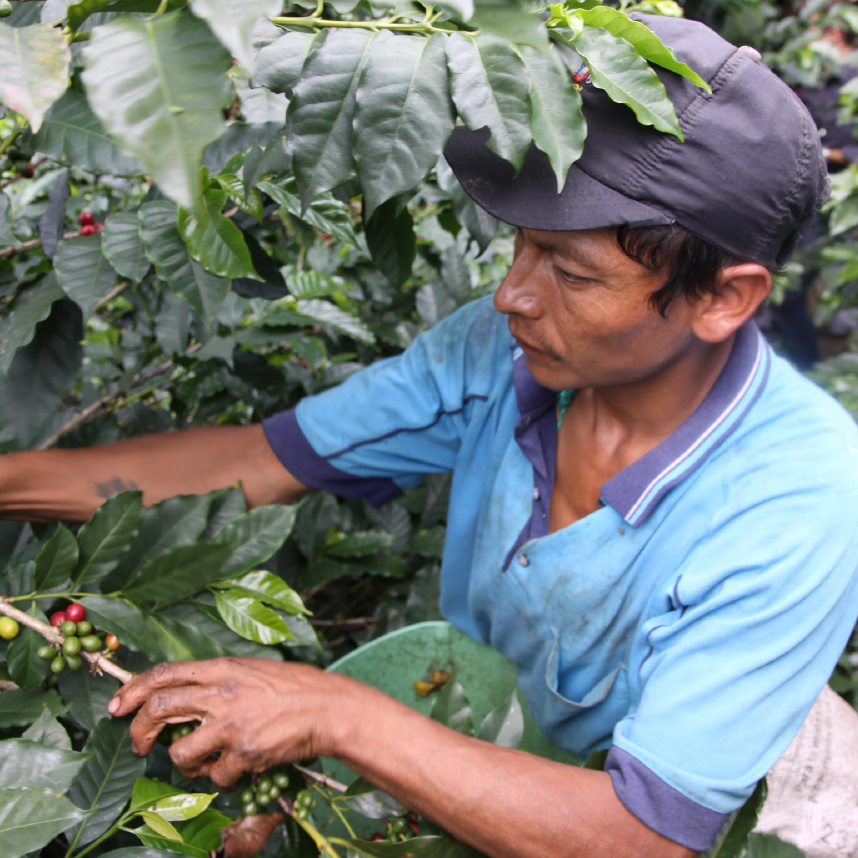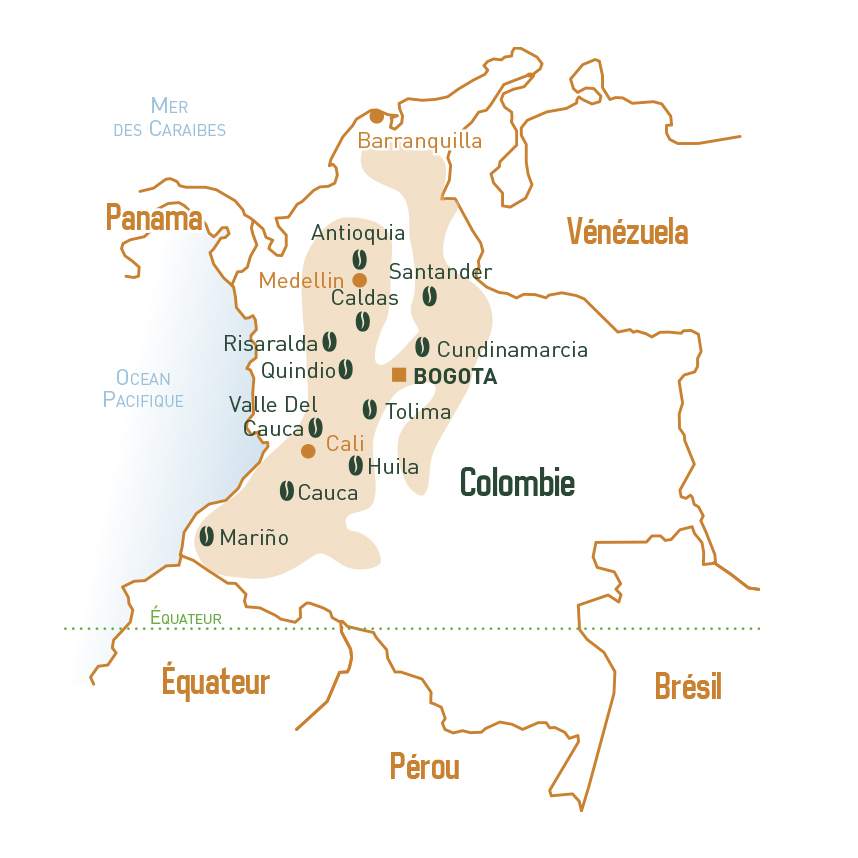
Colombia
Type: Arabica
Processing: Washed process
Classification: Excelso
Region:
Notes on aroma: The character of an arabica is related to the soil, the climate, and especially the altitude. The coffee matures slowly here, thus revealing the complexity of its aromas and a delicate acidity.
History
Legend has it that a traveller brought the first coffee beans to Colombia while passing through the country. Other more scholarly accounts prefer to credit the Jesuits: they are more likely to have brought the famous seeds with them into the country as early as 1730. In addition, history tells us that coffee production expanded in Colombia thanks to a priest, Francisco Romero, who, we are told, ordered his parishioners to sow a coffee seed every time they repented of their sins. Over the years, more precisely from 1835, these young shoots led to the first commercial harvests.
Geography
There are three main production regions in Colombia: the Central, Western, and Eastern Andes.
Each of these regions is further divided into departments, each of which produces a number of commercial varieties. Thus, in the central Andes, we find the departments of "Antioquia" and “Tolima”, home to the medellin, armenia and manizales varieties, which alone account for more than 50% of the country’s production.

Agronomy
Botanical species: Only Arabica
Botanical varieties: Bourbon, typica, caturra, maragogype
Altitude: Between 800 m and 1,900 m
Type of cultivation: In the shade, in the case of traditional plantings
Harvest: Manual and selective, between September and December
Processing:
• Washed and dry process
• Fermentation for 30 hours
• Natural drying on concrete, or artificial drying in ovens
• Mechanical and electronic sorting
Export period: throughout the year, although maragogype is exported in November.
Economy
With an annual production of approximately 12 million sacks, or 800,000 tonnes, Colombia ranks third in the world. It is also the world’s second-largest producer of arabica, and the leading producer of washed arabica. Colombia produces about 10% of the world’s coffee.
Colombian production has increased mainly thanks to the intensification of cultivation methods: the improvement of varieties, high planting density, and the abundant use of fertilisers. The country focuses mainly on high-quality coffee, and is the largest exporter of washed beans. Colombian coffee is one of the few pure coffees that are sold under this name worldwide. Its customers are the main industrialised countries, with Germany, the United States, and Japan at the top of the list. Sixty-six percent of the country’s 2.7 million coffee trees are grown on modern plantations, while the rest are grown by small family businesses.
However, more and more initiatives by small producers are promoting local coffee, especially in the Quindio region. These “speciality” coffees had previously been mixed with other Colombian coffees and have thus been unable to make their mark until now.